| Secret Treaties:
Historian’s Notes
By Mike Bennighof. Ph.D.
December 2020
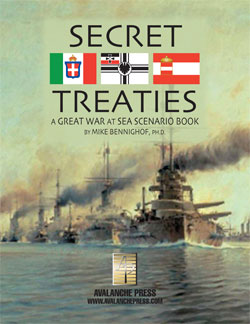 Wargames aren’t by their nature really suited to use as instruments of historical inquiry; for starters, a lot of the research (assuming there’s much if any research behind them) is hidden behind the interpretation. There are no footnotes on a Tiger tank piece. But you can still use them to focus on a historical question, using the game as a starting point and I’ve been trying to do that with our expansion books. Wargames aren’t by their nature really suited to use as instruments of historical inquiry; for starters, a lot of the research (assuming there’s much if any research behind them) is hidden behind the interpretation. There are no footnotes on a Tiger tank piece. But you can still use them to focus on a historical question, using the game as a starting point and I’ve been trying to do that with our expansion books.
Secret Treaties is an expansion for Great War at Sea: The Wine-Dark Sea. It’s based on the actual Triple Alliance war plan, the detailed document hammered out by Germany, Italy and Austria-Hungary for a naval war against the Allied powers (assumed to include Britain, France and Russia). In our High Seas Fleet book I explored the question of Germany’s commitment to challenging Britain’s dominance at sea. The “Dreadnought Race” was overblown at the time, by cynical arms manufacturers and opportunistic politicians. It wasn’t so much German determination to build battleships that helped bring Britain into the First World War as it was British belief that the Germans meant to do so. The book looks at how such a fleet, had it actually been built, might have been used in wartime.
Secret Treaties follows the same format: how might the Great War in the Mediterranean have played out had Italy remained true to its Triple Alliance obligations? The short answer is that, on paper at least, Italy and Austria-Hungary have an impressive united fleet, particularly once all 10 of their combined dreadnoughts are available for action. They are more than a match for the French plus the small British Mediterranean squadron based at Malta.
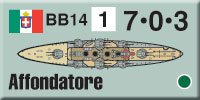 This is the same Italian fleet that refused to leave its bases during the First World War, mostly over the question of combined command. Italy had entered into no pre-war planning with the French or British, seeing them as potential enemies. In contrast, the Triple Alliance had agreed on command arrangements well before the war began: Anton Haus, commander of the Austrian battle fleet, would command the joint forces. The Germans convinced the Italians that the concession was necessary to bring the Austrians out of the Adriatic to fight in waters where the Dual Monarchy had no real interests. And they were probably right. This is the same Italian fleet that refused to leave its bases during the First World War, mostly over the question of combined command. Italy had entered into no pre-war planning with the French or British, seeing them as potential enemies. In contrast, the Triple Alliance had agreed on command arrangements well before the war began: Anton Haus, commander of the Austrian battle fleet, would command the joint forces. The Germans convinced the Italians that the concession was necessary to bring the Austrians out of the Adriatic to fight in waters where the Dual Monarchy had no real interests. And they were probably right.
So the Italian fleet in Secret Treaties is one more eager for battle than that of the actual conflict. Haus spoke fluent Italian and well understood that to keep the alliance together he would have to pursue goals common to all three partners. The Germans, the junior partner in this case, mostly wanted to keep both of their allies active in keeping down Allied naval forces tied down in the Mediterranean. Haus understood that, through strong naval action, he could keep Italian irredentists focused on Italian-speaking lands to the west of Italy (those ruled by France) instead of those to the east (those ruled by Austria).
Therefore the Triple Alliance has numbers on its side and the incentive to seize and hold the strategic initiative in the theater. Corsica and Nice are eventual targets of Haus’ naval operations, though his first objective was to break the maritime line of communications between Metropolitan France and her North Africa colonies. The Austrians insisted that the Italian army would not be able to break through the French Alps – something the Italians appear to have forgotten when they fought against the Austrians starting in 1915 – and Haus planned a great landing in Provence to unhinge the French mountain defenses as the final stage of the naval campaign.
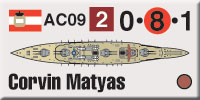 War represented an immense risk for Italy, and a war against Britain would be even riskier than one against Austria-Hungary. Italy depended on imports for many economically vital items, with coal heading the list. Would Germany and Austria-Hungary be able, or even willing, to make up these losses? The long coastline would be vulnerable to Royal Navy raiders. Would Austria-Hungary be willing to keep her fleet based on the Italian west coast, far from her own shores and interests? War represented an immense risk for Italy, and a war against Britain would be even riskier than one against Austria-Hungary. Italy depended on imports for many economically vital items, with coal heading the list. Would Germany and Austria-Hungary be able, or even willing, to make up these losses? The long coastline would be vulnerable to Royal Navy raiders. Would Austria-Hungary be willing to keep her fleet based on the Italian west coast, far from her own shores and interests?
Austrian analysts expected Italy to switch sides and fight against the Central Powers; the Germans disagreed and not until after operations had begun in August 1914 were Western Front commanders told not to expect the Italian Third Army to detrain in Alsace to anchor the Germans’ far left flank. It took a series of unusual events to bring Italy to the Allied side, not least of them the sudden death in July 1914 of Italian chief of staff Alberto Pollio, a strong supporter of the Alliance who was married to an Austrian noblewoman.
Despite Austrian suspicions, the adherence of Italy to the alliance was probably a more likely outcome than the actual events. In Secret Treaties we have a set of forty scenarios, in our story-arc format, exploring the course of the naval war that never happened but easily could have. I decided to focus the story on the central and western Mediterranean, using the map and pieces from The Wine-Dark Sea (and only The Wine-Dark Sea), and leave the Black Sea/Aegean Sea basins and the Greek-Turkish-Russian political triangle for a companion book.
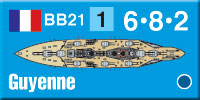 Secret Treaties also has new pieces; part of the hypothesis includes a more intense Mediterranean naval arms race between Austria-Hungary, France and Italy. We could have explored the question with just the ships included in The Wine-Dark Sea, but players like new ships and I had a bunch of potential warships I wanted to include. Secret Treaties also has new pieces; part of the hypothesis includes a more intense Mediterranean naval arms race between Austria-Hungary, France and Italy. We could have explored the question with just the ships included in The Wine-Dark Sea, but players like new ships and I had a bunch of potential warships I wanted to include.
The Imperial and Royal Austro-Hungarian Navy has been fleshed out with the more capable ships it wished to build, like the 16,000-ton “small dreadnought” offered in place of the Radezky-class semi-dreadnoughts, and the fast armored cruiser (actually a small battle cruiser) proposed for construction alongside the Tegetthoff-class dreadnoughts. Both of these projects were promoted as necessary to fulfill the Dual Monarchy’s obligations under the Triple Alliance.
The Italians have new fast armored cruisers of their own, proposed for the same reasons, and built Vittorio Cuniberti’s proposed all-big-gun battleship to touch off the dreadnought age (the “Affondatore Age”?). The French have new battlecruisers, unusual early dreadnoughts and new cruisers, too, all built to “answer” the Italians.
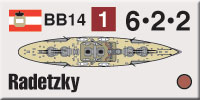 Designing the Secret Treaties book alongside The Wine-Dark Sea allowed me to synchronize the mix of pieces between them; while The Wine-Dark Sea as a core game is based on historical events that actually happened, I made sure it included ships I’d want for the alternative-history books. That allows Secret Treaties to drop in pretty easily, and tell a related but different story. Designing the Secret Treaties book alongside The Wine-Dark Sea allowed me to synchronize the mix of pieces between them; while The Wine-Dark Sea as a core game is based on historical events that actually happened, I made sure it included ships I’d want for the alternative-history books. That allows Secret Treaties to drop in pretty easily, and tell a related but different story.
Don’t wait to put Great War at Sea: Secret Treaties on your game table! Join the Gold Club and find out how to get it before anyone else!
Sign up for our newsletter right here. Your info will never be sold or transferred; we'll just use it to update you on new games and new offers.
Mike Bennighof is president of Avalanche Press and holds a doctorate in history from Emory University. A Fulbright Scholar and NASA Journalist in Space finalist, he has published countless books, games and articles on historical subjects.
He lives in Birmingham, Alabama with his wife, three children and his dog, Leopold.
Want to keep Daily Content free of third-party ads? You can send us some love (and cash) through this link right here. You don’t have to, but Leopold would like it if you did.
|
